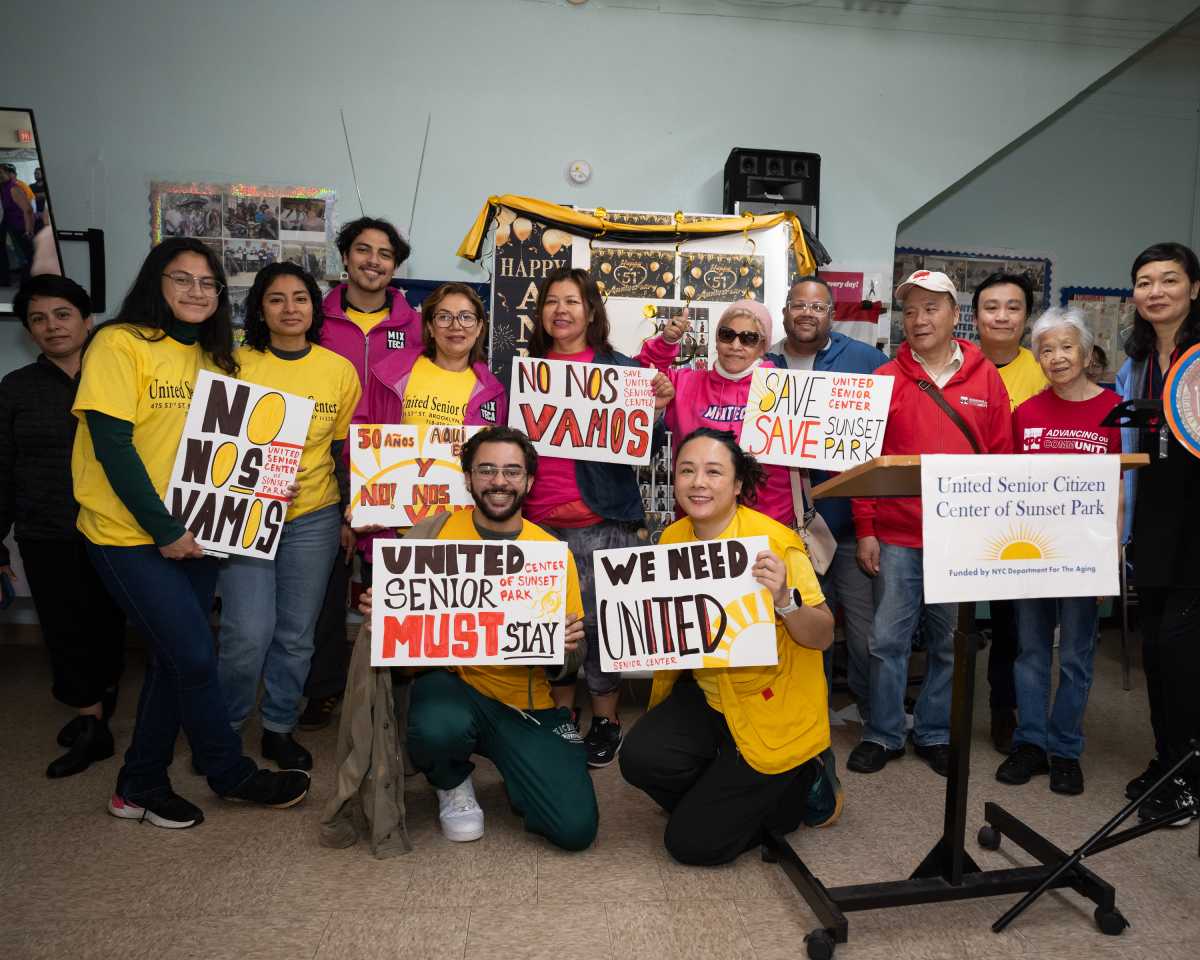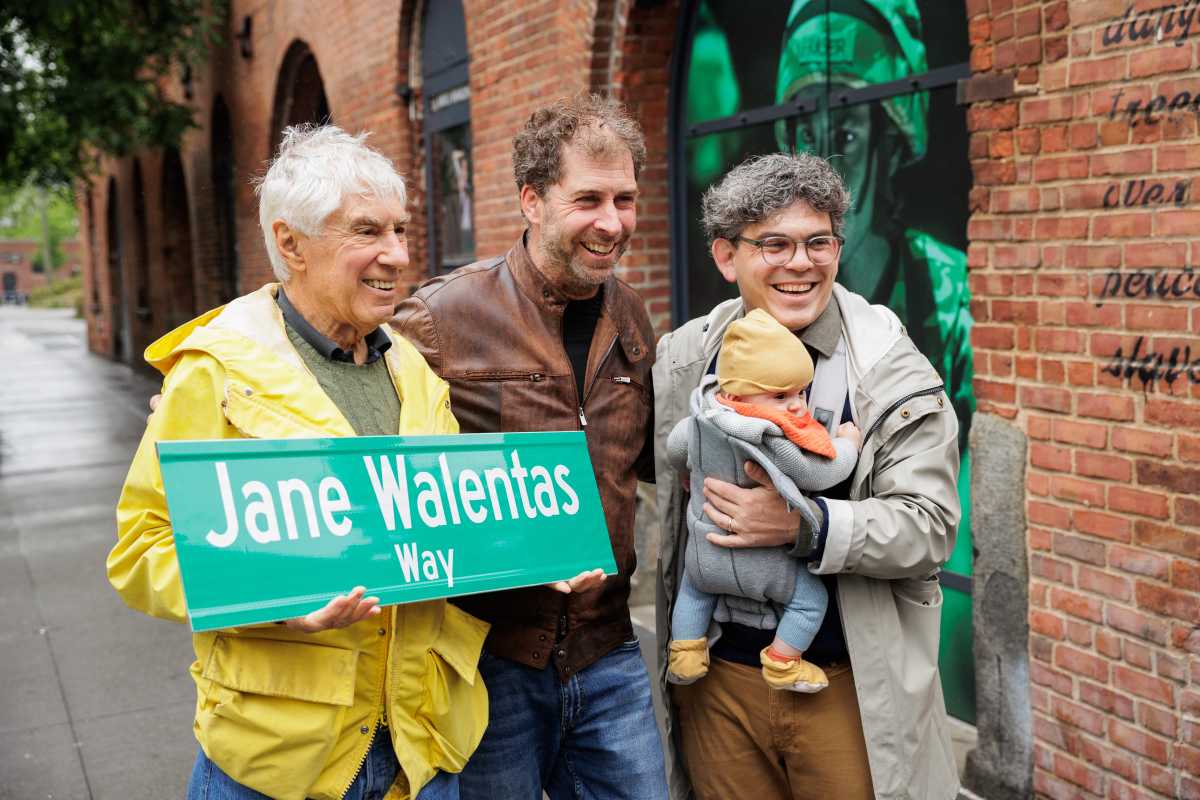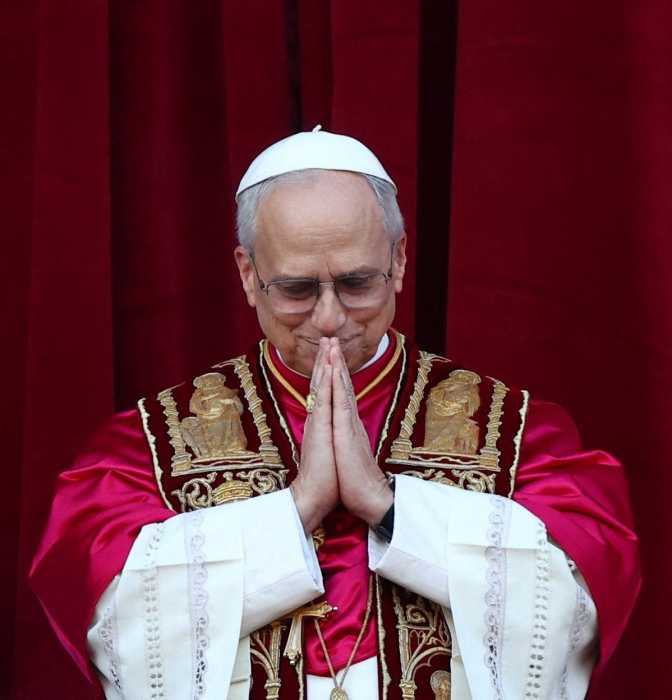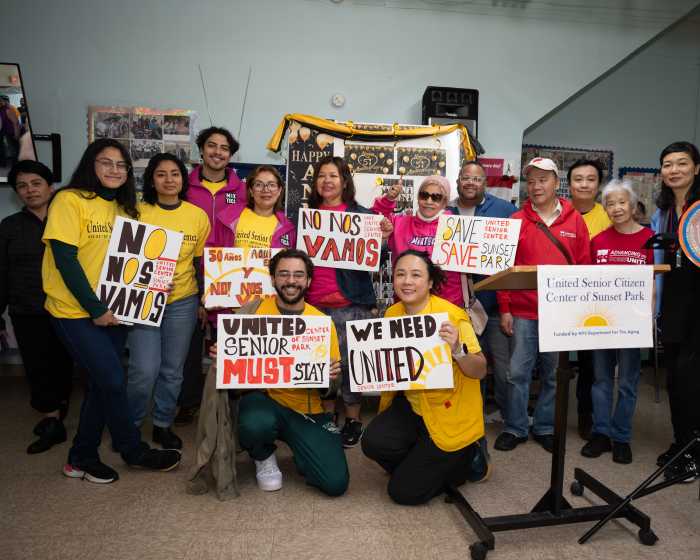
After residents rebelled against the idea, the Battery Park City Authority has abandoned a proposal to transform the pedestrian arcades along South End Ave. into private retail space.
BY DENNIS LYNCH
Following angry pushback from residents against a high-handed attempt to remake South End Ave., the Battery Park City Authority has abandoned its most controversial element — a proposal to allow expanded retail space take over the avenue’s covered pedestrian arcades along the sidewalks.
The 11th-hour concession from a top BPCA official came just before Community Board 1 was set to vote at its Oct. 25 meeting on whether to sign onto a blistering complaint to the governor’s office demanding the BPCA scrap its current South End Ave. plans and start over in cooperation with the Department of Transportation and residents
The BPCA’s climb down was a “good step forward,” according to the BPC committee chairwoman, but she suggested that the unpopular arcade-infill plan was just a symptom of the authority’s deeper disease, which is a “matter of process” that seems to cut out the voices of residents.
“There’s a lot of things they could to do show they’re listening,” Ninfa Segarra said. “It’s for the residents of Battery Park City to have a part in the [decision-making] process.”
Despite the olive branch offered by the BPCA’s vice president of real property Gwen Dawson, CB1 voted to send the complaint to the governor’s office anyway.
It is Gov. Cuomo, after all — not the thousands of Battery Park City residents who actually live there — to whom the BPCA board is accountable.
Since BPC is a state-owned asset managed by a board appointed by Gov. Cuomo, the BPCA’s primary mandate is its fiduciary responsibility to maximize financial returns to the state — which was the motivation many residents suspected to be behind the sudden push to handover thousands of square feet of open, public sidewalk space to become commercial retail that could increase the BPCA’s revenues.
But in the case of the South End Ave. arcades, the authority’s fiduciary priorities may just so happened to have aligned with the interests of residents. Dawson acknowledged at the meeting that in addition to the community opposition to enclose the arcades, the authority’s own economic analysis “indicates significant potential barriers to pursuing,” the plan.
The city recently suggested that a similar push for retail infill of arcades along Fidi’s Water St. may come to naught due to flood-proofing regulations.
But as Segarra suggested, the real problem residents have with the BPCA’s South End Ave. plans were often less about the changes proposed, and more about the secretive and exclusionary process of how those proposals were arrived at.
Instead of implementing a community-driven study on the avenue conducted by the Department of Transportation in 2013, which suggested improvements that CB1 has already signed off on, the BPCA decided, for reasons never fully explained, to hire an outside consulting firm to come up with three new alternate proposals with minimal community participation.
Adding to the impression that the BPCA wanted to limit public input, the authority set up meetings in the summer — when many BPC residents complained they were away — for locals to view the three outside proposals and offer feedback.
The BPCA’s proposals includes many traffic-calming measures the DOT had already recommended, such as curb extensions to narrow crosswalks, planted medians in some areas, and speed bump-like infrastructure on the roadway, which actually made the authority’s initiative less popular even with residents who want to see changes along South End Ave.
Even after the authority has backed down, many local leaders still argue that the BPCA should be held accountable for wasting residents’ money by paying outside consultants $270,000 for study largely duplicating the one just done by the city.
“This South End Avenue matter is over, the only question left is why did they do it in the first place?” said Pat Smith organizer of the Battery Park City Homeowners Coalition. “We have to call on our elected officials to ask why the authority decided on their own to go out and spend $270,000 on these pointless, needless proposals.”
Governor Cuomo’s office did not respond to calls for comment on the BPCA’s fiduciary effectiveness.

































